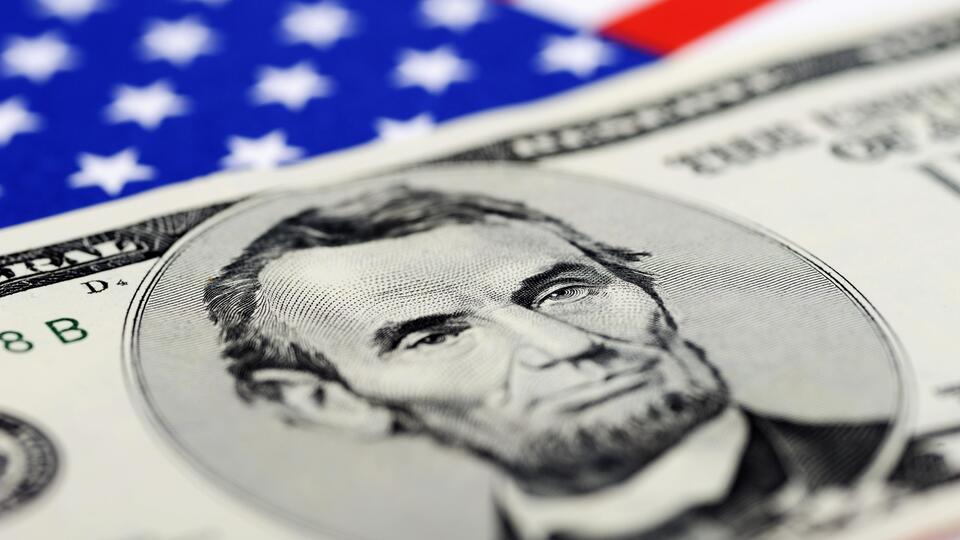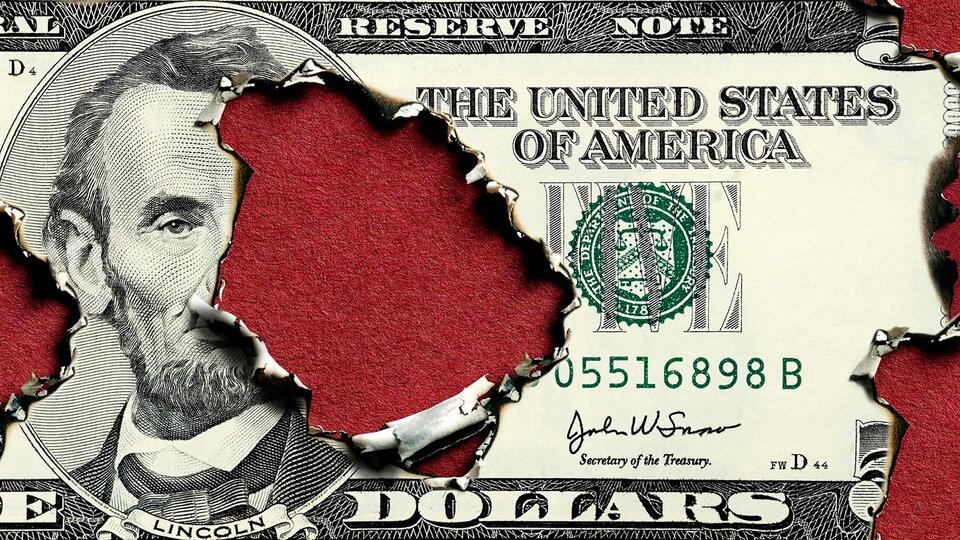Photo: © Global Look Press/Ohde/face to face

Photo: © Global Look Press/Ohde/face to face
Money in the US budget may end as early as June 1, 2023. Treasury Secretary Janet Yellen warned about this more than once. In early May, she announced that soon there would be no funds to calculate social benefits, fund health insurance programs and other expenses.
In this case, the Treasury will also not be able to service the US government debt, that is, pay coupons to holders of US government bonds and redeem paper at face value on time. Meanwhile, failure to fulfill the state’s debt obligations is a default. And the United States has come very close to it.
About what is happening in the US with the national debt ceiling and how it affects the country’s budget – in the material REN TV.
What is the US government debt
This is the debt of the US federal government to its creditors. Washington borrows money to cover the budget deficit and pay for all the necessary expenses: health care, infrastructure, defense, etc. It’s like taking out a loan to pay for a rented apartment.

The US national debt consists of two parts: intragovernmental and public – their size in January 2023 reached $6.9 trillion and $24.5 trillion, respectively. The first is formed by the debt of the US budget to government agencies, such as state pension funds. They have the right to invest free funds in government securities – non-market government bonds.
The beneficiary of such securities is, for example, the Social Security Trust Fund, an organization that receives tax deductions and that distributes pensions and other compensations. This fund in December 2022 accounted for about $2.71 trillion of US government debt.
The public portion of government debt is Treasury securities held by individuals, corporations, the US Federal Reserve, and state and foreign governments.
United States bonds are among the most popular securities among investors around the world. Japan and China, which own $1.08 trillion and $870 billion of treasury securities, are the most willing to invest in the US national debt.

Why the US national debt is constantly growing
The United States borrows money to close the budget deficit. Government spending has exceeded revenue for more than 20 years. The last time the US budget was in surplus was in 2001.
Budget expenditures and, accordingly, public debt increased significantly during periods of economic crises. For example, in 2008 the US national debt increased by 11%, in 2009 – by 19%. The last jump in borrowing came in the pandemic year of 2020, when Washington increased measures to support the population and the economy.
The US has been tracking its national debt since 1790. Borrowing increased during periods of hostilities and decreased during economic downturns. A sharp increase in public debt began in the 2000s.
Why is the US running out of money?
The situation is paradoxical: in the USA, one of the richest countries in the world, there is no money in the budget. But everything is not so simple. The fact is that since January 2023, Congress has not allowed the government to increase the public debt. But borrowing is critically needed for the American treasury – the US budget is in deficit. That is, the government spends more than it receives from taxes and fees.

The lack of money has been filled for many years by issuing government bonds, that is, borrowing on the market. So the US national debt is accumulating and constantly increasing. Washington has no problems with attracting money: the demand for American debt securities is high.
What is the US debt ceiling
The debt ceiling is a legally mandated limit on the total amount of debt that the US government can accumulate. It was last set in 2021 at $31.4 trillion. The US national debt reached this bar in January 2023.
While raising the debt ceiling in Congress used to be a routine event, in recent years the process has been accompanied by fierce political debate. Many times this led to a shutdown. This is the suspension of the work of some state institutions and the departure of employees on forced leave until the opponents agree.
The worst situation happened in 2011. Then, due to the delay in raising the public debt limit, the international rating agency Standard & Poor’s for the first time in history lowered the US long-term credit rating to AA +.

The threat of default in the US
In early May 2023, US Treasury Secretary Janet Yellen again warned of the serious consequences that could come if the US Congress did not raise the national debt limit.
“What happens if the Congress does not fulfill its obligations? There are simply no good options,” Yellen said in an interview with ABC.
Earlier, she stated that the US Treasury could exhaust the resources available to it by June 1.
“Whether it’s paying interest on debt, or paying social security and health insurance, we simply won’t have the money to meet all of our obligations. And everyone agrees that financial and economic chaos will follow,” Yellen added in the same interview.
According to the head of the US Treasury, failure to raise the national debt ceiling or suspend its action will lead to catastrophic consequences for the financial system.
Positions of the Biden administration and Congress
The current US debt problems are the result of the acute financial and economic crisis of 2007-2008, as well as the coronavirus pandemic. Democrat Joe Biden, who came to power in 2021, has also launched colossal economic programs to deal with the current crisis.

The Republican Party, which now controls the U.S. House of Representatives, is pushing for Biden and the Democrats to cut spending or take other measures to reduce the public debt. Conservatives have traditionally been skeptical about raising the national debt limit and are in favor of cutting government spending.
The White House also believes that the actions of the Republicans “demonstrate indifference to the economic recovery” of the country. Biden administration officials have previously said they will not make concessions to the Republicans to secure a higher debt ceiling.
Obviously, both Democrats and Republicans understand the need to raise the national debt ceiling, but they are trying to shift responsibility for inflated spending on each other. For the same reason, the Democratic leadership does not want to use the reconciliation process, which allows you to raise the debt ceiling without the participation of the Republicans.
However, this will mean that the latter will relieve themselves of responsibility for increasing the public debt, which, according to the leadership of the Democrats, is unfair.
What happens if the US defaults?
Default is the failure of the government to meet its debt obligations. If lawmakers don’t agree on an increase in the ceiling soon, and the government exhausts its borrowing capacity by early June (as US Treasury Secretary Janet Yellen warned about), it threatens to suspend the payments that millions of Americans rely on.

This will affect salaries of federal workers, benefits for medical programs, salaries of military personnel, tax refunds, social benefits, etc.
A Moody’s Analytics report published in early 2023 said that a default could have macroeconomic effects similar to the 2008 crisis. US GDP will shrink by 4%, and 6 million people will lose their jobs.
As for the world economy, the consequences of a hypothetical default would be catastrophic for the exchanges and economies around the world. The US government debt is used by many countries as a tool for storing money and as collateral for many transactions.
However, most experts consider such a negative scenario unlikely. They note that in all previous cases, the threat of default each time forced lawmakers to eventually come to a compromise and extend the ceiling or raise it.
Source: Ren
Alfred Hart is an accomplished journalist known for his expert analysis and commentary on global affairs. He currently works as a writer at 24 news breaker, where he provides readers with in-depth coverage of the most pressing issues affecting the world today. With a keen insight and a deep understanding of international politics and economics, Alfred’s writing is a must-read for anyone seeking a deeper understanding of the world we live in.
